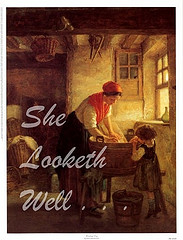Is it rewarding to invest in music instruments as an asset class?
In a contemporary setting, antique stringed instruments have proved to be an excellent alternative investment. The fact that we cannot source fine wood that was used by the old craftsmen - makes these fine instruments irreplaceable items. The potential returns offered are virtually uncorrelated with any other asset class, hold steady over time and are lucrative. In comparison, the risks are low and inexpensive to hedge.
What is the size of the market currently, the rate of growth and the
prospects of investing in this asset class?
The market for fine instruments is presently valued at approximately USD 22 billion. It continues to grow as instruments crafted by newer makers have gained in importance. Depending on which era of violin making one chooses to invest in, growth should follow the trends of the past 50 years, wherein it returned 8-15% annually. I actually think this is sustainable over the next decade.
Who and how much should be invested in music instruments to make it a viable investment?
The market is certainly open to anyone with an interest in diversifying their portfolio. I would suggest a minimum of USD 30,000. As a relatively low risk investment this is likely to offer the returns already mentioned. An allocation of anything lower than that, often, ceases to be a collectable and thus loses its appeal.
Drawing on your expertise, what would you say is the best approach to investing in music instruments?
Seek out the best professional opinion in order to identify and invest in undervalued instruments. Insure the most obvious risks associated with the instruments. It is also vital to understand the correlation that exists amongst the various makers, age and condition of the instruments. As with all investments, it pays to be interested in the asset itself.
As opposed to stringed instruments, what are the prospects like for investing in other music instruments?
Fine stringed instruments including violins, cellos and violas, have a broader acceptance and are highly sought after. Aside from the individual artisan nature of violin making, it is age that bestows value to a stringed instrument. Most musical instruments “play themselves out” - whereas a fine old bowed string instrument, like the violin, continues to develop complexity and character. Not surprisingly, the market for them is significantly larger than those of other musical instruments.
How do you source rare musical instruments?
As items that possess sentimental as well as monetary value; these tend to surface where people of western origin have relocated to. These instruments may be held by private individuals, families, or institutions. Another major source is the presence of these instruments in musician’s hands: After a career that has spanned many decades - playing the same instrument - many choose to eek out their retirement thanks to the value their instrument has gained in the interim years. As one of the few qualified and recognised players in this industry, a reasonable quantity of our stock has also been brought in to us.
What criteria do you apply in choosing stringed instruments?
Characteristics, condition, wood, model, size, and varnish.
How important is authentication?
“Authentication” entails the examination and understanding of instruments; skills that I have refined over 25 years of having being exposed to reference examples of genuine articles. Value is added when a name or firm, such as ours, held in high esteem by the market and peers provides certification toward an instruments authenticity.
Do you think investing in music instruments is exclusive to the rich?
Not at all, as anybody can invest via a syndicate or participate in an investment trust. Often, the acquisition of a rare instrument, by a musician or collector lacks the required capital. That is where specialists like myself structure syndicates as investment vehicles to support and fund the acquisition of music instruments.
What justifies fantastical prices commanded by some musical instruments - even though to serve a purpose – a well made copy/new instrument is capable of delivering the “same” quality of music?
True. A new instrument played by a maestro could deceive a layman’s ears; but the additional effort required on the part of the musician is drenching. In order to be competitive, a musician needs an instrument that is versatile and subtle, and projects an even balance between depth and brilliance.
What role does speculation play?
The “antique value” of a rare collectable is very desirable. The rest is about supply and demand. Even if demand drops slightly, there are never enough old Italian high end instruments around. Speculation, currently, surrounds less known maker from the 1930s to 1960s as one might “buy and hold” until they start to appreciate - as has been experienced by instruments dating back to the 1920s.
What are the peculiarities exhibited by investments made in musical instruments as an asset class?
Manoeuvrability lends itself well to an instruments price appreciation… hence it offers a very global market.
What are the risks associated with this investment class, can they be hedged and at what cost?
The primary risk would be damage or loss of the instrument itself. Insuring against this risk costs approximately 0.1%-0.3% pa of the total value for a high end instrument. For example, a G B Guadagnini violin, made in Turin in 1773, presently valued at USD 1,000,000 dollars and used in concert settings around the world, would cost roughly USD 2,000 pa to insure. If the same instrument was kept and left unused in a collection, the premium would likely move down to around USD 1,000 pa. Historically there is very little risk as evident from the exceptionally low premiums.












No comments:
Post a Comment